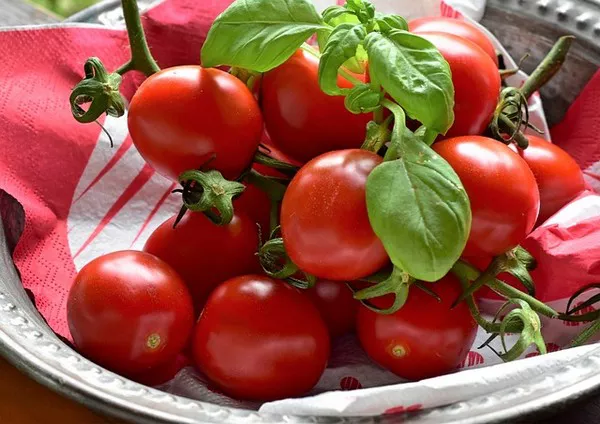Tomato plants are a staple in many home gardens and agricultural fields due to their versatility and nutritional value. However, these plants can fall victim to various pests, with whiteflies being a common and destructive invader. Whiteflies are tiny, sap-sucking insects that not only weaken tomato plants but also transmit harmful plant viruses. Effective management of whiteflies is crucial to ensuring a healthy tomato harvest. This article presents a comprehensive guide on how to get rid of whiteflies on tomato plants through integrated pest management (IPM) strategies.
Understanding Whiteflies
Whiteflies, scientifically known as Bemisia tabaci, are small flying insects that belong to the Aleyrodidae family. They are commonly found in warm and temperate regions, making tomato plants susceptible to their infestations. These pests feed on plant sap using their needle-like mouthparts, which weakens the plant and leads to stunted growth, reduced yields, and, in severe cases, plant death. Furthermore, whiteflies can transmit various viral diseases such as tomato yellow leaf curl virus and tomato mosaic virus, compounding the damage they cause.
Integrated Pest Management (IPM) Approach
Integrated Pest Management is a holistic and sustainable approach to managing pests by combining various techniques to minimize their impact while preserving environmental and human health. When dealing with whiteflies on tomato plants, a well-rounded IPM strategy is essential for effective control. This approach involves multiple steps that synergize to create a hostile environment for whiteflies.
Cultural Practices
Plant Diversity: One of the foundational principles of IPM is to encourage biodiversity in the garden. Intercropping tomato plants with companion plants that naturally repel whiteflies, such as marigolds or basil, can help reduce infestations.
Sanitation: Regularly remove any fallen leaves, weeds, or debris from the tomato plants’ vicinity. Whiteflies can breed on these materials, so removing them disrupts their lifecycle.
Crop Rotation: Rotate tomato plants with non-host crops, like beans or corn, to break the whiteflies’ life cycle. This prevents them from building up large populations in the same area year after year.
Mechanical Control
Pruning: Regularly prune and remove heavily infested leaves or stems to prevent the spread of whiteflies. Be sure to dispose of these pruned materials away from the garden to avoid re-infestation.
Water Spray: Use a strong stream of water to physically dislodge whiteflies from the tomato plants. Repeat this process every few days to reduce their numbers.
Biological Control
Predatory Insects: Introducing natural predators such as ladybugs, lacewings, and parasitic wasps can help keep whitefly populations in check. These insects feed on whiteflies and their eggs, providing a natural form of control.
Nematodes: Beneficial nematodes can be applied to the soil to target whitefly larvae in their pupal stage. These microscopic organisms are harmless to humans and plants but effectively parasitize whitefly larvae.
Chemical Control
Insecticidal Soap: Insecticidal soaps are a low-toxicity option that disrupts the cell membranes of whiteflies and other soft-bodied insects. Be sure to thoroughly cover the undersides of leaves where whiteflies often congregate.
Neem Oil: Neem oil is an organic option derived from the neem tree. It affects whiteflies by disrupting their growth and development, ultimately leading to population reduction.
Horticultural Oils: These oils smother the whiteflies and their eggs by forming a thin film on the plant’s surface. Apply horticultural oil during cooler times of the day to avoid leaf damage.
Chemical Insecticides: If infestations are severe and other methods have proven ineffective, chemical insecticides can be used as a last resort. Choose products labeled specifically for whiteflies and follow instructions carefully to minimize risks to beneficial insects and human health.
Preventive Measures
Yellow Sticky Traps: Hang yellow sticky traps near tomato plants to attract and capture adult whiteflies. This method helps monitor the population and reduce their numbers.
Reflective Mulches: Covering the soil with reflective mulches can disorient whiteflies and deter them from settling on the plants.
Row Covers: Installing row covers over young tomato plants can physically block whiteflies from reaching them, providing a barrier against infestations.
Regular Monitoring
Consistent monitoring is crucial to catch whitefly infestations early before they escalate. Regularly inspect the undersides of leaves for whiteflies, eggs, and nymphs. If you notice any signs of infestation, promptly apply the appropriate control measures.
Conclusion
Whiteflies can wreak havoc on tomato plants, threatening not only the health of the plants but also the quality of the harvest. Employing an integrated pest management approach that combines cultural practices, mechanical control, biological control, and, if necessary, chemical control, can effectively manage whitefly populations. By implementing these strategies and remaining vigilant in monitoring, gardeners and farmers can enjoy healthier tomato plants and bountiful yields while minimizing the need for harsh chemicals and their environmental impact. Remember that a proactive stance and a holistic approach are the keys to successfully getting rid of whiteflies on tomato plants.


